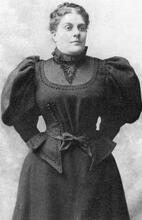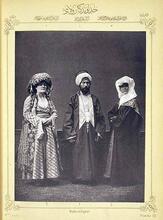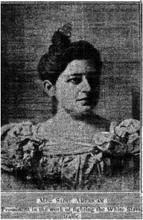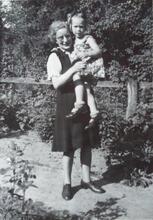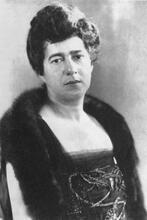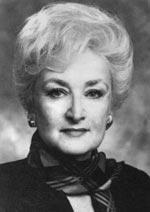Blanche Gilman
Blanche Gilman devoted her career to bringing diverse groups together, from her interfaith work to her leadership in the Pro-Falasha (Ethiopian Jewry) Committee. During World War I, Gilman helped lead a local chapter of the American Red Cross, providing medical and social services in New York. She served on several committees of the National Conference of Christians and Jews, later becoming the president of both the Federation of Jewish Women’s Organizations of Greater New York and the New York State Federation of Temple Sisterhoods. Gilman also chaired a variety of organizations for world Jewry, including the American Pro-Falasha Committee, the United Jewish Appeal, the United Palestine Appeal, and the Joint Distribution Committee, and served as the volunteer chair of the New York State Commission for the Blind.
Article
A native New Yorker, Blanche Pearl Gilman contributed her energy and resources to a variety of religious, health, social, and activist organizations. She was born on January 30, 1886, to Frederick and Matilda (Ottenreuter) Gutter. After graduating from Hunter College in 1905 (she was the president of her class) she married David E. Goldfarb, the son of Julius and Jane (Wilner) Goldfarb, in 1905. The couple had one son, Stanley Sidney Goldfarb.
She began teaching Jewish history in the Mount Neboh Religious School in New York in 1906. As a member of that Reform congregation, she was drawn to synagogue life and became an organizer of the sisterhood. That early volunteer work in the Mount Neboh community led her to take a leadership role in the congregation’s chapter of the American Red Cross. The chapter sponsored one of five reclamation centers in New York City, comprising nine hundred workers and providing medical and social services during World War I. She also did interreligious work as a member of the executive and women’s advisory committees of the National Conference of Christians and Jews.
In 1927, she became president of the Federation of Jewish Women’s Organizations of Greater New York. During the 1930s, she also held a number of positions at the state and national levels. She became the president of the New York State Federation of Temple Sisterhoods in 1932, and was a member of the National Federation of Temple Sisterhoods. In recognition of her interest in world Jewry, she was chair of the women’s division of the American Pro-Falasha Committee (1930–1931), the women’s division of the United Jewish Appeal (1934–1935), the United Palestine Appeal (1936), and the Joint Distribution Committee (1936). She had come a long way from her modest beginnings in the Mount Neboh congregation. Her activity in the Jewish community continued right up until her death in the 1970s.
In the 1930s, she began to participate actively in city and state politics. New York mayor Fiorello La Guardia appointed her in 1934 to serve on a committee to promote increased milk consumption in the state. Later, she worked with the Division of the Blind of the New York State Department of Social Welfare. In 1945, she served as the volunteer chair of the New York State Commission for the Blind. Her tenure continued under governors Thomas E. Dewey, W. Averell Harriman, and Nelson Rockefeller until her retirement from the post in 1969.
It is not known how her first marriage ended. In 1937, she married Isaac Gilman, a paper manufacturer and philanthropist. Isaac Gilman shared some of his wife’s interreligious inclinations, and built Protestant and Catholic churches in Gilman, Vermont. The town was named after him, commemorating the site of his first paper mill. Isaac Gilman died there in August 1944. Blanche Gilman died more than thirty years later in New York, on July 8, 1976. Memorial notices issued by Congregation Emanu-El in New York and the Federation of Jewish Women’s Organizations acknowledged her substantial contributions to American Jewish life and to society at large.
AJYB 47:522–523, s.v. “Isaac Gilman”.
NYTimes, July 10, 1976, 26, and July 11, 1976, 45, and July 12, 1976, B2.
WWIAJ (1938).

